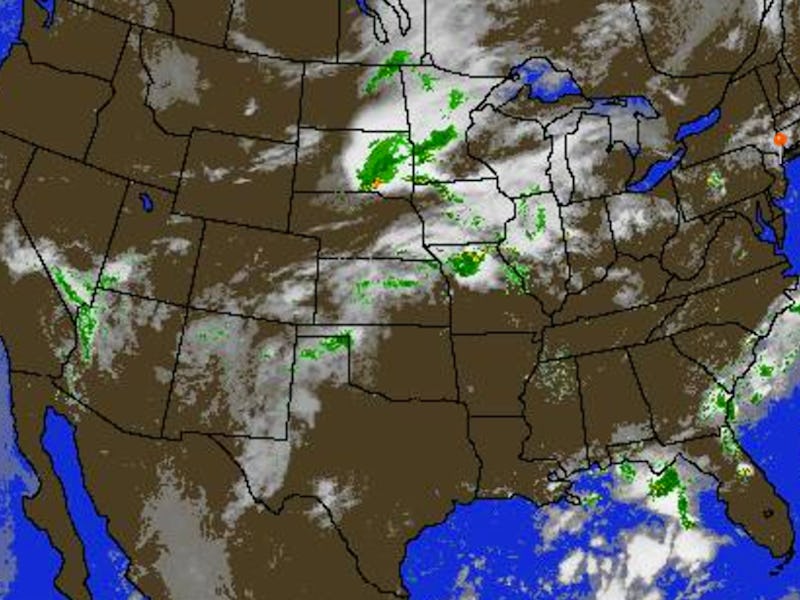Where It's Cloudy for Today's Total Solar Eclipse
It's looking good.

Let us be the latest people to say it: Today’s total solar eclipse will be a rarity: The sun will be completely blocked out by the moon.
But seeing it will require clear skies, and we all know that weather is fickle. So how likely is it that weather will work in our favor?
The short answer is the greater Pacific Northwest, which includes Oregon (but not the foggy coast) and Idaho are likely in for clear skies; also favorable are Wyoming and Kansas.
Here’s where it’s cloudy as of 1 p.m. today in the continental United States, according to AccuWeather:
Now compare that to this map showing the so-called “path of totality” — the 70-mile-wide ribbon where the effects of the total solar eclipse will be most visible, meaning the darkest ribbon in America:
Rick Fienberg an astronomer and the American Astronomical Society’s press officer, has this suggestion for finding a good eclipse-viewing location:
The weather is pretty favorable all along the path, with exception of the Oregon coast where there’s often fog. The Smoky Mountains are kind of risky too. Virtually everywhere else along the path is likely to have the chance of pretty clear skies. You’re likely to see it — more likely than not — but if you head to the Pacific Northwest you’ll increase your chances.
Fienberg gets his meteorological insight from renowned eclipse chaser Jay Anderson, the “go-to guy” for eclipse climatology, who has integrated decades of weather data into a 2017 eclipse map, providing anyone the ability to see the precise areas that have the best chance of clear skies. Anderson provides both a nationwide overview, as well as state-specific maps.
Per Jay Anderson: Eclipse-track map showing the average morning and early afternoon August cloudiness derived from 17 years of satellite observations. Best weather prospects are found in northern Oregon, Idaho, central Wyoming, and western Nebraska. For a more contoured version of this map, click here. Data: NASA GFSC/Reto Stockli.
Not everyone can travel to the historically clearest areas, like central Idaho, so Fienberg’s recommendations are simple. “First, get yourself into the path,” he says. Easy. Once there, “You want to go where Jay Anderson says you have the maximum likelihood of clear skies on eclipse day.”
But should your eclipse be thwarted by clouds, do remember the ol’ meteorological adage: “Climate is what you expect; weather is what you get.”